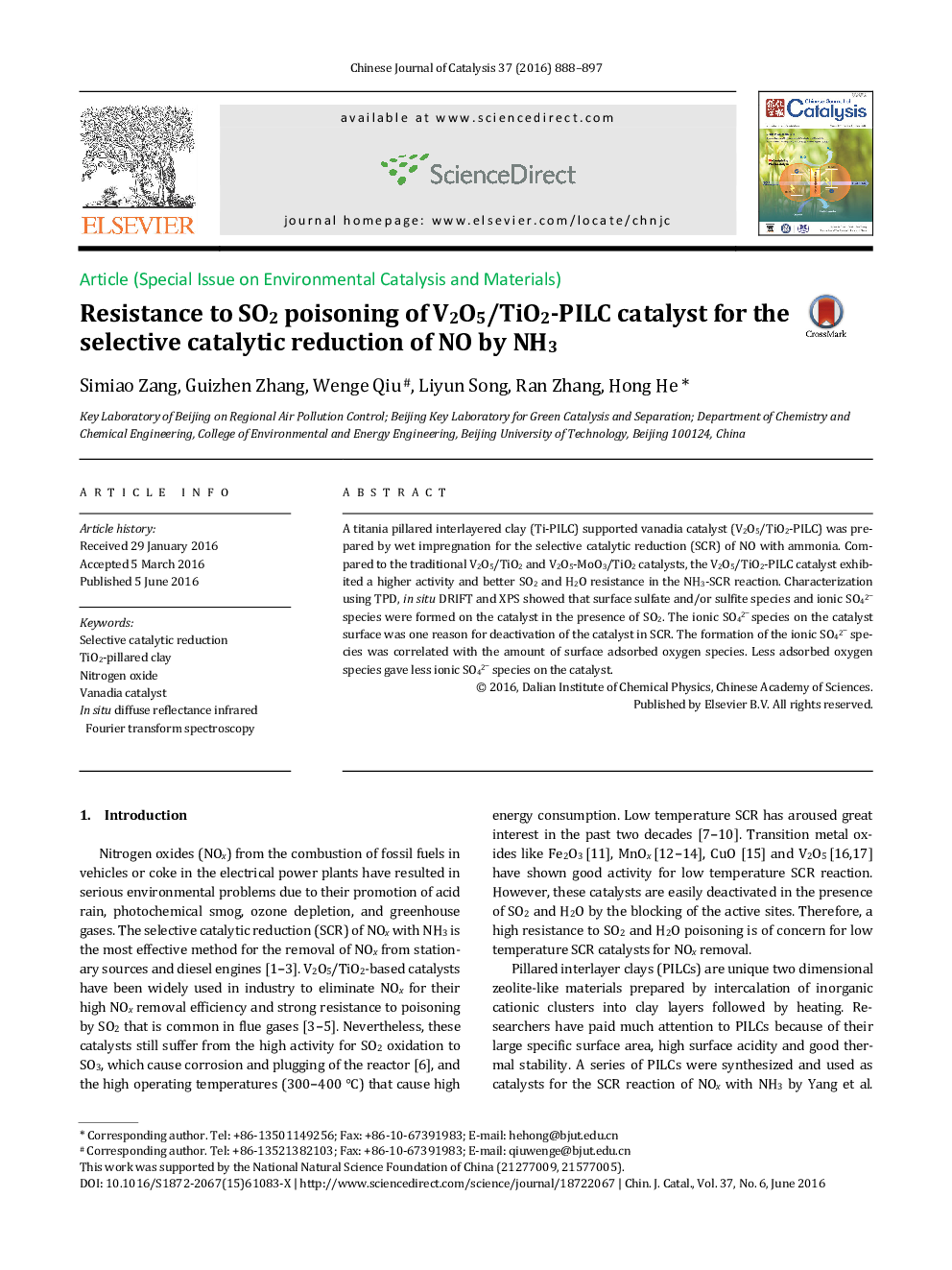| Article ID | Journal | Published Year | Pages | File Type |
|---|---|---|---|---|
| 59587 | Chinese Journal of Catalysis | 2016 | 10 Pages |
A titania pillared interlayered clay (Ti-PILC) supported vanadia catalyst (V2O5/TiO2-PILC) was prepared by wet impregnation for the selective catalytic reduction (SCR) of NO with ammonia. Compared to the traditional V2O5/TiO2 and V2O5-MoO3/TiO2 catalysts, the V2O5/TiO2-PILC catalyst exhibited a higher activity and better SO2 and H2O resistance in the NH3-SCR reaction. Characterization using TPD, in situ DRIFT and XPS showed that surface sulfate and/or sulfite species and ionic SO42− species were formed on the catalyst in the presence of SO2. The ionic SO42− species on the catalyst surface was one reason for deactivation of the catalyst in SCR. The formation of the ionic SO42− species was correlated with the amount of surface adsorbed oxygen species. Less adsorbed oxygen species gave less ionic SO42− species on the catalyst.
Graphical AbstractThe accumulation of ionic SO42– species on the V2O5/TiO2-PILC catalyst surface might be one of the main reason that led to the deactivation of catalyst in SCR reaction in the presence of SO2 and H2O. The formation of ionic SO42– species might correlate with the amount of surface adsorbed oxygen species on the catalyst.Figure optionsDownload full-size imageDownload as PowerPoint slide
